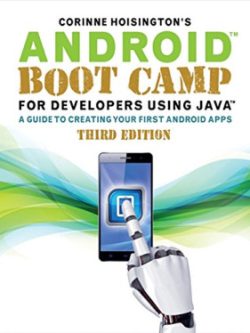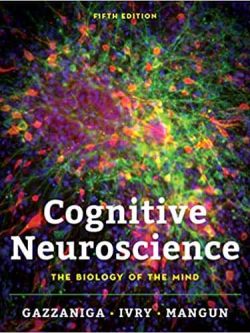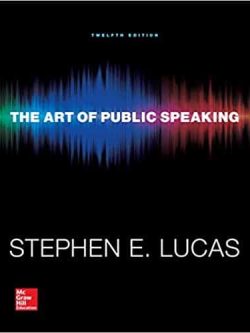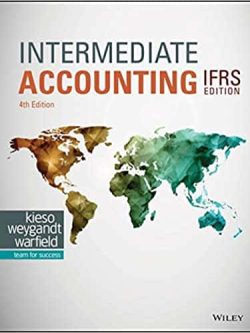Specifications
| book-author | Dr. Chuck Easttom |
|---|---|
| file-type | |
| isbn10 | 0135774772 |
| isbn13 | 9780135774779 |
| language | English |
| publisher | Pearson |
Book Description
“Computer Security Fundamentals” (4th Edition) by Dr. Chuck Easttom is an essential guide for anyone looking to gain a solid foundation in the principles and practices of computer security. Designed for students, IT professionals, and those new to the field of cybersecurity, this textbook covers a wide range of topics that are crucial for understanding and defending against the modern threats facing computer systems and networks. Here are some key aspects of this edition:
### **1. Comprehensive Coverage of Fundamental Concepts**
– **Introduction to Computer Security:** The book begins with an overview of the key concepts in computer security, including the goals of security, the types of threats that systems face, and the basic principles of protecting information and infrastructure.
– **Types of Attacks:** Dr. Easttom provides detailed explanations of various types of cyberattacks, such as malware, phishing, denial-of-service (DoS) attacks, and social engineering. The book explains how these attacks are carried out and what measures can be taken to prevent them.
– **Security Policies and Procedures:** The importance of establishing strong security policies and procedures is emphasized, with practical advice on how organizations can develop and implement effective security frameworks.
### **2. Technical and Practical Focus**
– **Encryption and Cryptography:** The book delves into the basics of encryption and cryptography, explaining how these techniques are used to protect data both in transit and at rest. The coverage includes symmetric and asymmetric encryption, hashing, and digital signatures.
– **Network Security:** A significant portion of the text is dedicated to network security, including topics such as firewalls, intrusion detection systems (IDS), and virtual private networks (VPNs). Dr. Easttom explains how these tools work and how they can be deployed to secure networks.
– **Operating System Security:** The book covers security features of various operating systems, including Windows, Linux, and macOS. It discusses how to secure these systems from vulnerabilities and ensure that they are properly configured to resist attacks.
### **3. Hands-On Learning Approach**
– **Real-World Examples:** Dr. Easttom includes numerous real-world examples and case studies that illustrate the application of computer security principles in actual scenarios. These examples help to bridge the gap between theory and practice.
– **Exercises and Projects:** Each chapter contains exercises and projects that encourage hands-on learning. These activities are designed to reinforce the material covered and provide practical experience in applying security techniques.
– **Review Questions:** To aid in comprehension and retention, the book includes review questions at the end of each chapter. These questions test the reader’s understanding of the key concepts and provide a way to assess progress.
### **4. Updated Content in the 4th Edition**
– **Emerging Threats:** The 4th edition of “Computer Security Fundamentals” has been updated to include the latest developments in cybersecurity, including discussions of emerging threats such as ransomware, advanced persistent threats (APTs), and cyber warfare.
– **Current Best Practices:** The book reflects the latest best practices in the field, ensuring that readers are learning the most up-to-date techniques for securing systems and networks.
– **Regulatory Compliance:** New content has been added on regulatory compliance, including discussions of laws and standards such as the General Data Protection Regulation (GDPR), the Health Insurance Portability and Accountability Act (HIPAA), and the Payment Card Industry Data Security Standard (PCI DSS).
### **5. Authoritative and Accessible**
– **Expert Author:** Dr. Chuck Easttom is a recognized expert in the field of computer security, with extensive experience as both an educator and a practitioner. His clear and accessible writing style makes complex topics understandable for readers at all levels.
– **Structured for Learning:** The book is well-organized, with chapters that build logically from basic concepts to more advanced topics. This structure makes it suitable for use as a textbook in academic courses as well as a self-study guide for individuals.
### **6. Resources for Instructors**
– **Supplementary Materials:** Instructors using the book in a classroom setting will find a variety of supplementary materials available, including slides, test banks, and lab exercises. These resources support the teaching and learning process and help instructors deliver effective cybersecurity education.
### **7. Importance of Cybersecurity Awareness**
– **Emphasis on Awareness:** Dr. Easttom emphasizes the importance of cybersecurity awareness among all users, not just IT professionals. The book discusses how individuals and organizations can foster a culture of security awareness to protect against human error and insider threats.
– **Ethical Considerations:** The text also touches on the ethical considerations of cybersecurity, encouraging readers to think critically about the implications of their actions in the digital realm.
“Computer Security Fundamentals” (4th Edition) by Dr. Chuck Easttom is a comprehensive and up-to-date resource for anyone interested in understanding the essential aspects of computer security. Whether you are a student, an IT professional, or simply someone looking to improve your knowledge of cybersecurity, this book provides the foundational knowledge and practical skills needed to secure systems and data in today’s increasingly complex digital world.












Reviews
There are no reviews yet.